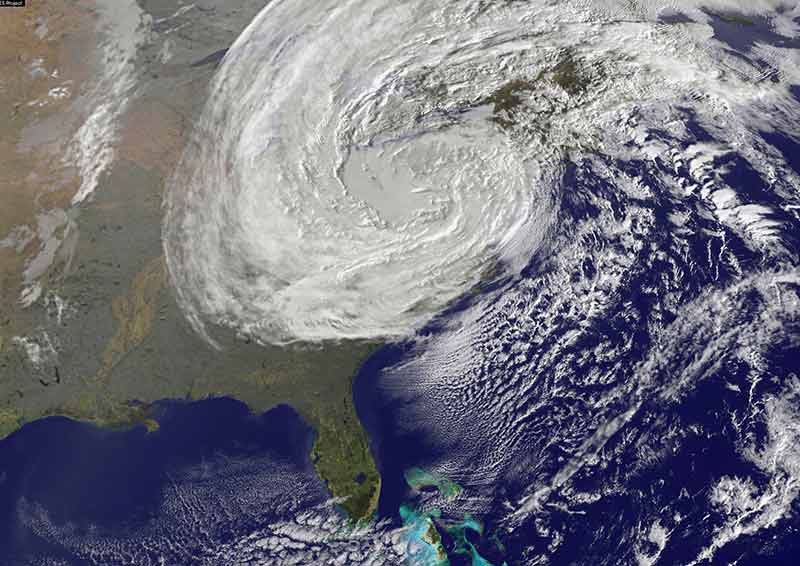Engineers and hurricanes
Robert N. Roop, Founder and President of US firm Lockatong Engineering gives an insight into how engineers help minimise risk and damage to communities.
Hurricanes are one of the most destructive forces that can hit a country. Hurricanes are large, spiraling tropical storms that can pack wind speeds of over 160 mph and unleash more than 2.4 trillion gallons of rain a day.
On September 8, 1900, the city island of Galveston, Texas was hit by the deadliest hurricane in US history where an estimated 8,000 people lost their lives. 105 years later, the country was hit again by Hurricane Katrina, which resulted in over $105 bn of damage in properties, infrastructure, and livelihood.
Because of the threats that hurricanes pose yearly, many organisations and private professionals like engineers are now creating plans for how to reduce the risk and damage from hurricanes before, during, and after their onslaught.
Before the hurricane season comes, engineers develop risk mitigation measures that reduce the frequency, intensity, scale and impact of hazards brought by the hurricane. Preparedness plans are produced which often include early warning systems that monitor and predict the occurrence of hazards, and contingency plans for effective response and recovery which can be implemented by the community.
Professional engineers are also responsible for spreading advocacy by influencing and encouraging the community and other bodies to become involved in reducing identified risk. Furthermore, engineers have the task to develop and construct infrastructure with high natural disaster resistance.
In the US, one of the government agencies that responds during natural disasters such as a hurricane is the US Army Corps of Engineers (USACE).
The USACE has a workforce of over 37,000 civilians and active duty personnel that deliver engineering services in over 90 countries. Throughout the onslaught, they provide affected people with immediate emergency support, critical commodities and temporary emergency power, and initiate recovery efforts by assessing and restoring damaged infrastructure. During and after Hurricane Sandy in 2012, the USACE team efficiently removed saltwater from subways and tunnels, and helped clear up 3.6 million cubic yards of debris from city areas.
Judging the wide scope of their role – from planning to implementation to rebuilding – it’s clear that engineers play a vital part in reducing the damage caused by hurricanes and ensuring the life and safety of the public.
Lockatong’s useful infographic at www.lockatong.com, explains more.
This article was originally published by ICE as 'How do engineers help protect communities during hurricane season?' on 1 Sept 2016.
--The Institution of Civil Engineers
[edit] Related articles on Designing Buildings Wiki
- Articles by ICE on Designing Buildings Wiki
- Catchment flood management plan CFMP.
- Coastal defences.
- Environmental plan.
- Flood risk.
- Flood risk management plans.
- Future proofing construction.
- Helping communities recover from disasters and protecting them before they occur.
- Hurricane design considerations.
- Interferometric synthetic aperture radar InSAR.
- Managing and responding to disaster.
- Masterplanning.
- Risk assessment.
- Ten years on – Lessons from the Flood on building resilience.
- Two steps towards a more resilient world.
Featured articles and news
Infrastructure that connect the physical and digital domains.
Harnessing robotics and AI in challenging environments
The key to nuclear decommissioning and fusion engineering.
BSRIA announces Lisa Ashworth as new CEO
Tasked with furthering BSRIA’s impressive growth ambitions.
Public buildings get half a million energy efficiency boost
£557 million to switch to cleaner heating and save on energy.
CIOB launches pre-election manifesto
Outlining potential future policies for the next government.
Grenfell Tower Inquiry announcement
Phase 2 hearings come to a close and the final report due in September.
Progress from Parts L, F and O: A whitepaper, one year on.
A replicated study to understand the opinion of practitioners.
ECA announces new president 2024
Electrical engineer and business leader Stuart Smith.
A distinct type of countryside that should be celebrated.
Should Part O be extended to existing buildings?
EAC brands heatwave adaptation a missed opportunity.
Definition of Statutory in workplace and facilities management
Established by IWFM, BESA, CIBSE and BSRIA.
Tackling the transition from traditional heating systems
59% lack the necessary information and confidence to switch.
The general election and the construction industry
As PM, Rishi Sunak announces July 4 date for an election.
Eco apprenticeships continue help grow green workforce
A year after being recognised at the King's coronation.
Permitted development rights for agricultural buildings
The changes coming into effect as of May 21, 2024.























